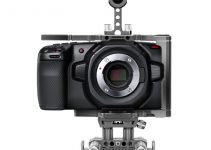Beyond any doubt, both the Sony A7III and A7RIII are two of the most popular mirrorless cameras that have been released on the market in the past twelve months. With an improved design, enhanced color science, and better overall image quality, Sony’s continues to ride the mirrorless high horse with the latest iterations of their ubiquitous Alpha line of full-frame cameras. But, which one of the two should you opt for?
Long-time Sony user Jason Vong seeks the answer in the next video while explaining what makes the A7III and A7RIII stand-out picks. In addition, he covers a few of the differences between the siblings, helping you decide which model to buy, should you choose to invest in a Sony camera.
For starters, each counterpart shares updated designs that improve the photo and video taking experience. Features such as a navigation joystick, dual SD card slots for redundant recording, longer lasting batteries, no screen dimming, and no overheating issues give shooters the ability to go out in the field and film for an extensive period of time – all with improved usability features and peace of mind when it comes to content control.
Additionally, Sony has implemented newer color science algorithms in their latest cameras. The enhanced color science has a slight bias for reds, which helps improve skin tones while minimizing the infamous green/magenta-tint commonly associated with Sony footage.
Speaking of colors, each camera also features the well-liked Sony color profiles, including S-Log 2, S-Log 3, and Hybrid Log Gamma (HLG). Furthermore, both the A7III and A7RIII provide several convenient and professional features such as 120fps recording at 1080p with no sensor crop and Super 35mm mode, allowing you to use APS-C lenses – or simply crop the sensor slightly for a longer reach with your full-frame lenses.
Both cameras also contain upgrades regarding image processing speed for better image buffering, vastly improved and rapid autofocus (although the A7III has slightly more focus points than the A7RIII), in-body image stabilization, and silent shutter with an electronic front curtain for noise-free shooting.
While the A7III and A7RIII are welcome updates to Sony’s line of mirrorless cameras, there are a few noteworthy differences between the two models as well. For instance, the A7RIII has a 42MP sensor whereas the A7III sports a 24MP one.
The higher megapixel count on the A7RIII allows the camera to shoot higher quality photos and videos with a greater degree of image detail than on the A7III (twice the image resolution resulting in greater flexibility in post-production).
In the meantime, when using Super 35 mode on the A7RIII, you’re downgrading from 24 Megapixels to 18 Megapixels, providing you with sharp-looking images and videos even with the sensor crop. This is better than using the Super 35 mode on the A7III, which will force the camera to scale down from 24 Megapixels to a mere 10 Megapixels, leading to a noticeable loss in image quality.
While the A7RIII’s higher megapixel count does provide you with sharper-looking images, there is a cost in the form of larger file sizes, leading to the requirement of more or larger capacity SD cards for media storage.
Further, to fully take advantage of the A7RIII’s sensor, you’ll need to invest in sharp, high-quality lenses such as Sony’s G-Master line. Unfortunately, these lenses will set you back a few thousand dollars, a fact that should apparently be taken into consideration before investing in either system.
On the other hand, the A7III’s lower megapixel count makes the camera an exceptional performer in low-light. In fact, Vong points out that in a video by acclaimed tech-guru Max Yuryev, the A7III performs comparably to the low-light king, the (somewhat outdated) Sony A7SII – even at ISO 12,800.
Having gone through the highlight features of both cameras, you may be wondering which camera would work best for you. Long story short, if you’re looking for the best price-to-performance pick, the A7III is definitely a feasible option, especially since it provides pro-level features and stunning image quality for a relatively affordable price.
However, if you’re someone who wants a camera perfect for medium-to-large format shooting/printing and absolutely needs the most detail out of your shots, the A7RIII is the better camera for you.
[source: Jason Vong]
Order Links:
Sony Alpha a7 III Mirrorless Digital Camera (Body Only) (B&H, Amazon)
Sony Alpha a7R III Mirrorless Digital Camera (Body Only) (B&H, Amazon)
Disclaimer: As an Amazon Associate partner and participant in B&H and Adorama Affiliate programmes, we earn a small comission from each purchase made through the affiliate links listed above at no additional cost to you.


